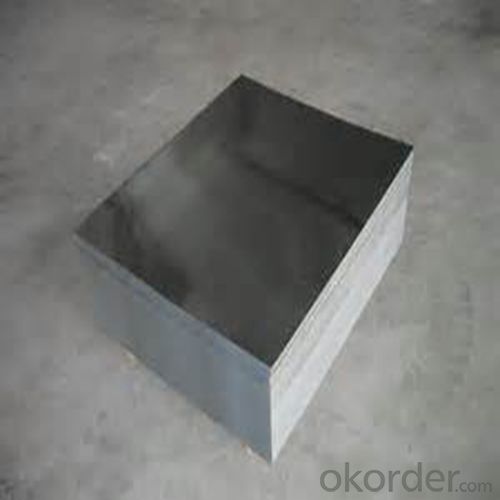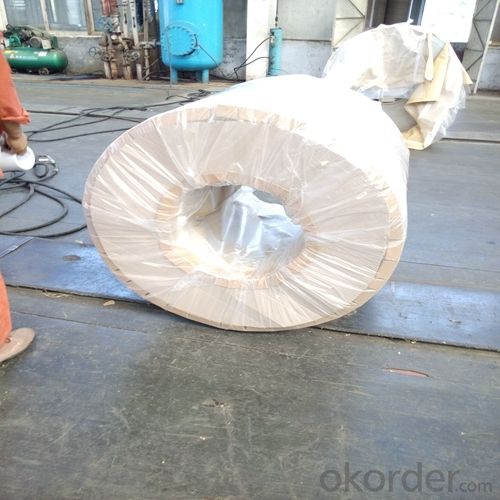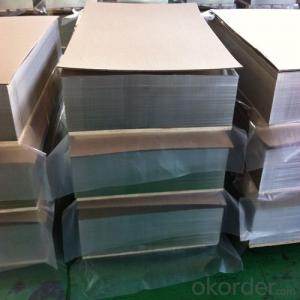Prime Quality Tinplate and Tin Free Steel for Cans
- Loading Port:
- Shanghai
- Payment Terms:
- TT OR LC
- Min Order Qty:
- 25 m.t.
- Supply Capability:
- 25000 m.t./month
OKorder Service Pledge
OKorder Financial Service
You Might Also Like
Item specifice
1.Structure of Prime Quality Tinplate and Tin Free Steel for Cans Description
Also known as chromed steel, tin-free steel (TFS) is obtained by coating the metal base (low-carbon steel) with an ultra-thin layer of metallic chrome and then with a chromium oxide layer.
The product complies with ASTM A-657 Specification and is manufactured with low current density (TFS-III) and is supplied only in coils of up to 12 metric tons.
2.Main Features of the Prime Quality Tinplate and Tin Free Steel for Cans
Formability and strength – Tinplates have got very good formability and strength. By selecting a proper temper grade, appropriate formability is obtained for different applications as well as the required strength after forming.
Corrosion resistance – Tinplate has got good corrosion resistance. By selecting a proper coating weight, appropriate corrosion resistance is obtained against container contents. Coated items should meet 24 hour 5 % salt spray requirement.
Solderability and weldability – Tinplates can be joined both by soldering or welding. These properties of tinplate are used for making various types of cans.
Hygienic – Tin coating provides good and non toxic barrier properties to protect food products from impurities, bacteria, moisture, light and odours.
Safe – Tinplate being low weight and high strength makes food cans easy to ship and transport.
Eco friendly – Tinplate offers 100 % recyclability.
Tin is not good for low temperature applications since it changes structure and loses adhesion when exposed to temperatures below – 40 deg C.
3.Prime Quality Tinplate and Tin Free Steel for Cans Images


4.Prime Quality Tinplate and Tin Free Steel for Cans Specification
Specification of :
Standard: ISO 11949 -1995, GB/T2520-2000,JIS G3303,ASTM A623, BS EN 10202
Material: MR,SPCC
Thickness:0.15mm - 0.50mm
Width: 600mm -1150mm
Temper: T1-T5
Annealing: BA & CA
Coil Inner Diameter: 508mm
Weight: 6-10 tons/coil 1~1.7 tons/sheets bundle
Passivation:311
Oil: DOS
Surface: Finish,bright,stone,matte,silver
5.FAQ of Prime Quality Tinplate and Tin Free Steel for Cans
- What is tinning and how does it work?
Tinning is the process of thinly coating sheets of wrought iron or steel with tin, and the resulting product is known as tinplate. It is most often used to prevent rust.
- Do you only have prime quality tinplate?
We can supply both prime and second quality tinplate.
- Q:Can tinplate be used for packaging of non-food products?
- Yes, tinplate can be used for packaging of non-food products. Tinplate is a versatile material that offers excellent protection against moisture, light, and oxygen, making it suitable for various non-food items such as cosmetics, chemicals, and pharmaceuticals. Its durability and recyclability further make it a popular choice for packaging non-food products.
- Q:How does tinplate packaging contribute to product durability?
- Tinplate packaging contributes to product durability by providing a strong, protective barrier against external factors such as moisture, oxygen, and light. This helps to prevent spoilage, corrosion, and degradation, thereby extending the shelf life of the product. Additionally, tinplate packaging is resistant to impact and puncture, reducing the risk of damage during transportation and handling.
- Q:What are the main factors affecting tinplate coil surface quality?
- The main factors affecting tinplate coil surface quality include the cleanliness of the steel substrate, the quality of the tin coating, the level of oil or grease residues, and the presence of any defects or imperfections on the surface. Additionally, factors such as the processing conditions during manufacturing, handling and storage practices, and the environment in which the tinplate is exposed can also impact the surface quality.
- Q:How does tinplate contribute to the shelf life of beverages?
- Tinplate contributes to the shelf life of beverages by providing a protective barrier against light, oxygen, and moisture, which helps to prevent oxidation and spoilage. This ensures that the beverage retains its quality, taste, and freshness for a longer period of time. Additionally, tinplate cans also have excellent sealing properties, further reducing the risk of contamination and extending the shelf life of beverages.
- Q:Can tinplate be used for chemical packaging?
- Yes, tinplate can be used for chemical packaging. Tinplate is a type of steel coated with a thin layer of tin, which provides a protective barrier against corrosion. It is widely used in the packaging industry, including for chemicals, due to its durability, resistance to corrosion, and ability to maintain product integrity.
- Q:Can tinplate be used for aerospace applications?
- Yes, tinplate can be used for certain aerospace applications. It is often used for cosmetic purposes in aerospace components such as decorative trim or coating on interior surfaces. However, it is not typically used for structural or critical parts due to its relatively low strength and potential for corrosion.
- Q:What are the main factors affecting tinplate coil loading and unloading?
- The main factors affecting tinplate coil loading and unloading include the weight and size of the coils, the type of loading and unloading equipment available, the condition of the storage area or container, and the expertise and efficiency of the operators involved.
- Q:How is tinplate coated with water-based paints?
- Tinplate is coated with water-based paints using a process called coil coating. In this process, the tinplate is cleaned and then coated with a primer layer, which helps in improving adhesion. After the primer layer, multiple layers of water-based paints are applied using rollers or spray techniques. These layers are then dried and cured to form a strong and durable coating on the tinplate surface.
- Q:Tin plated tin plated?
- Because of the punching after the incision site no tin layer, while most parts of surface layer of tin, the pretreatment process of adverse, removing tin layer will damage the substrate without removing the tin layer if not plating parts difficult to achieve uniform effect
- Q:What are the different coatings used on tinplate?
- There are several different coatings used on tinplate, including tin-free steel (TFS), electrolytic tinplate (ETP), tin-free steel chromium coated (TFS Cr), and tinplate with an organic coating (lacquered tinplate). These coatings serve various purposes such as providing corrosion resistance, enhancing the appearance, and improving the overall durability of the tinplate.
1. Manufacturer Overview |
|
|---|---|
| Location | |
| Year Established | |
| Annual Output Value | |
| Main Markets | |
| Company Certifications | |
2. Manufacturer Certificates |
|
|---|---|
| a) Certification Name | |
| Range | |
| Reference | |
| Validity Period | |
3. Manufacturer Capability |
|
|---|---|
| a)Trade Capacity | |
| Nearest Port | |
| Export Percentage | |
| No.of Employees in Trade Department | |
| Language Spoken: | |
| b)Factory Information | |
| Factory Size: | |
| No. of Production Lines | |
| Contract Manufacturing | |
| Product Price Range | |
Send your message to us
Prime Quality Tinplate and Tin Free Steel for Cans
- Loading Port:
- Shanghai
- Payment Terms:
- TT OR LC
- Min Order Qty:
- 25 m.t.
- Supply Capability:
- 25000 m.t./month
OKorder Service Pledge
OKorder Financial Service
Similar products
New products
Hot products
Hot Searches
Related keywords


























